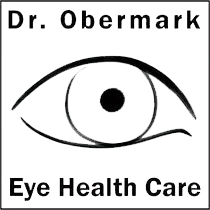Conjunctivitis (Pink Eye)

Did you recently receive a school handout warning of a pink eye outbreak? Or perhaps you woke up with a red, itchy, and sticky eye that just doesn’t feel right? You may be dealing with conjunctivitis—commonly known as pink eye in Poplar Bluff MO and Sikeston MO. Although many cases of pink eye resolve without treatment, seeking care from the professionals at Dr. Obermark Eye Health Care can offer faster relief, help prevent spreading, and rule out more serious conditions.
Whether you’re a parent, student, or adult struggling with eye discomfort, our teams here to provide expert diagnosis and treatment to protect your vision and restore comfort.
What Is Pink Eye (Conjunctivitis)?
Conjunctivitis is an inflammation of the conjunctiva—the thin, transparent tissue covering the white part of your eye and the inside of your eyelids. When this layer becomes irritated or infected, the tiny blood vessels become more visible, giving the eye a red or “pink” appearance.
There are several different causes of conjunctivitis, each requiring a different approach to treatment:
Viral Conjunctivitis
This highly contagious form is often associated with the common cold or other upper respiratory infections. It usually causes:
- Redness
- Watery discharge
- Gritty or burning sensation
- Itchiness in one or both eyes
There is no specific antiviral medication; most cases clear up on their own with supportive care.
Bacterial Conjunctivitis
This form is caused by bacterial infections and spreads quickly, especially in schools and daycare centers. Symptoms include:
- Yellow, green, or white discharge
- Eyelids stuck together, especially in the morning
- Swelling and irritation
It typically requires prescription antibiotic eye drops or ointment.
Allergic Conjunctivitis
Triggered by allergens such as pollen, dust, pet dander, or mold, this form is not contagious and is characterized by:
- Intense itching
- Redness in both eyes
- Watery or stringy discharge
- Puffy eyelids
Treatment focuses on managing the allergic reaction and avoiding known triggers.
Irritant Conjunctivitis
Exposure to smoke, chemicals, chlorine, or environmental irritants can also cause conjunctivitis. This usually goes away once the irritant is removed. Symptoms mimic other types but tend to resolve quickly with proper rinsing and care.
Additional Causes of Conjunctivitis
- Contact Lens Use
Improper cleaning, overuse, or wearing contaminated lenses can lead to bacterial or fungal conjunctivitis. Symptoms may escalate quickly, requiring immediate treatment to prevent vision loss. - Newborn Conjunctivitis
Also known as neonatal conjunctivitis, this condition occurs when a newborn is exposed to bacteria or viruses during birth. It’s a serious medical issue and should be evaluated promptly.
Diagnosing Pink Eye
Proper diagnosis is key to effective treatment. Here’s what you can expect during an eye exam at Dr. Obermark Eye Health Care:
1. Medical History Review
We begin with a discussion of your symptoms, potential exposure sources, general health, and contact lens habits. Knowing if one or both eyes are affected and how the condition started helps determine the cause.2. Visual and External Examination
Using a slit-lamp microscope, your optometrist will examine the surface of the eyes, eyelids, and surrounding tissues to identify inflammation, discharge, and swelling.3. Symptom Breakdown by Type
We evaluate your specific symptoms to distinguish between types:
- Viral: Watery, itchy, often one eye first
- Bacterial: Thick discharge, often both eyes
- Allergic: Itchy, watery, and often both eyes
- Irritant: Redness and tearing after exposure to a known substance
4. Lab Testing (If Needed)
In unclear or severe cases, we may collect a small sample of eye discharge for lab analysis to pinpoint the exact cause and ensure the most accurate treatment.5. Rule-Out of Other Eye Conditions
Some conditions, like dry eye syndrome, blepharitis, or uveitis, can mimic pink eye. We take extra care to rule these out through detailed exam protocols.
How Pink Eye Is Treated
Treatments vary depending on the cause of conjunctivitis:
Viral Conjunctivitis
- Cold compresses to reduce inflammation
- Artificial tears to soothe irritation
- Strict hygiene practices to prevent spread
- Usually resolves in 7–14 days without medication
Bacterial Conjunctivitis
- Antibiotic eye drops or ointments to eliminate infection
- Gentle lid cleaning with warm water to remove discharge
- Avoid contact lenses until cleared
- Improvement often occurs within a few days
Allergic Conjunctivitis
- Antihistamine or mast cell stabilizer eye drops
- Cold compresses for comfort
- Avoidance of allergens
- Air filters and allergen reduction strategies may be recommended
Irritant Conjunctivitis
- Flush eyes with clean water or saline
- Remove the irritant immediately
- Lubricating drops to relieve dryness and irritation
- Usually clears quickly with minimal intervention
Important Pink Eye Tips & Prevention
- Stop wearing contacts if symptoms develop—this can make things worse.
- Disinfect household surfaces like remotes, doorknobs, and counters.
- Don’t share towels, cosmetics, or pillows.
- Wash hands frequently and avoid rubbing your eyes.
- Follow all medication instructions and complete the full course.
- Return for follow-up if symptoms worsen or don’t improve in 48–72 hours.
Fast, Effective Pink Eye Relief
If you suspect you or your child has pink eye, don’t wait it out—especially if symptoms are worsening or interfering with daily life. At all Dr. Obermark Eye Health Care locations in Poplar Bluff MO and Sikeston MO, we offer fast, effective care for all types of conjunctivitis with personalized treatment plans and expert guidance.
Book your appointment today to get back to seeing clearly and feeling better—without the discomfort and uncertainty of untreated pink eye.



